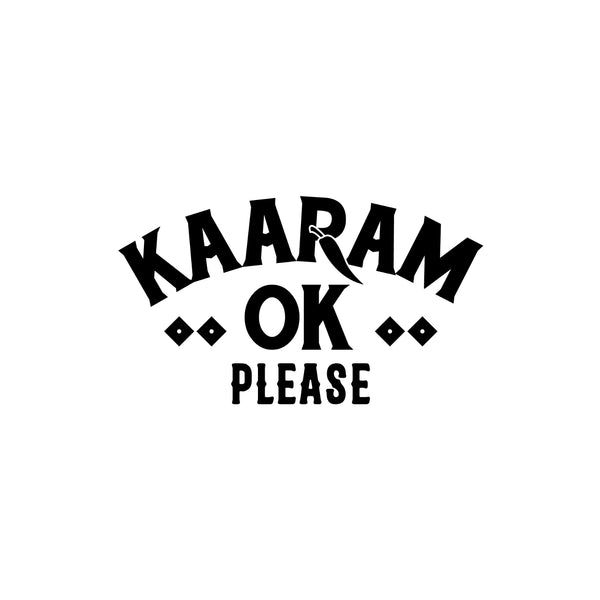Bottling Memory: How We Create Flavour from Nostalgia and Ingredient-Led Curiosity
kaaramokplease AdminShare
At Kaaram OK Please, every product starts as a feeling — the sharp burst of a chilli remembered from a summer lunch, the smoky perfume of sesame oil wafting from a grandmother’s pickle jar, the handwritten scrawl of a forgotten recipe in the back of an old diary. We don't begin in a lab; we begin in the kitchen shelf of memory.
Our ideation process is deeply ingredient-led. We often stumble upon a pepper, a petal, or a pulp that captures our attention — sometimes at a farmer’s market, sometimes in a recipe passed down in conversation. Once an ingredient calls to us, we dive in: testing, tasting, pairing it with other notes to see how it sings.
Much of our inspiration is drawn from old South Indian cookbooks like Samaithu Paar, The Chettinad Cookbook among others — and even more from the uncredited authors of family recipe books: those dog-eared diaries in a mix of Tamil and English script, pages stained with turmeric, edges browned with time. These are not just instructions — they’re maps to flavour, layered with the intent and instinct of home cooks who measured with “oru kai” (a palmful) and timed things with “oru paattu” (a song).
We pour over old photos, the kind with steel tumblers and banana leaves, to remember not just what people ate — but how. We talk to our elders, dig up voice notes, ask them what their mothers made when they were sick or when guests came over unexpectedly. These moments become the scaffolding of our new lines. They help us ask: How do we carry this forward without flattening it?
The final product is built for today’s kitchens — spooned over avocado toast, swirled into pasta, shaken into a cocktail — but it carries with it all the weight of taste-memory. What you taste is time: preserved, tweaked, bottled.
This is how we create. With one foot in the past, and one hand firmly stirring the present.
